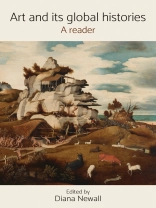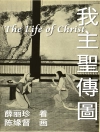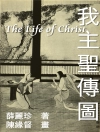The reader Art and its global histories represents an invaluable teaching tool, offering content ranging from academic essays and excerpts, new translations, interviews with curators and artists, to art criticism.
The introduction sets out the state of art history today as it undergoes the profound shift of a ‘global turn’. Particular focus is given to British India, which represents a shift from the usual attention paid to Orientalism and French art in this period. The sources and debates on this topic have never before been brought together in a satisfactory way and this book will represent a particularly significant and valuable contribution for postgraduate and undergraduate art history teaching.
表中的内容
Introduction
Section One: Confronting Art History: Overviews, Perspectives and Reflections
Introduction
Critical Approaches
1.1 Orientalism
a) Edward W. Said, ‘Introduction – Section II’ , Orientalism
b) Linda Nochlin, ‘The Imaginary Orient’
1.2 Homi K. Bhabha, The Location of Culture
a) ‘The Other Question: Stereotype, Discrimination and the Discourse of Colonialism’
b) ‘Articulating the Archaic: Cultural Difference and Colonial Nonsense’
1.3 New perspectives and approaches in Art History
a) Thomas Da Costa Kaufmann, ‘The Geography of Art: Historiography, Issues, and Perspectives’
b) James Elkins, ‘Why Art History is Global’
c) Parul Dave Mukherji, ‘Whither Art History in a Globalizing World’
Section Two: European art and the Wider World c. 1350–1550
Introduction
Primary Source texts
2.1. Europeans describing Amerindian artists in Mexico
a) Allè, Francesco da Bologna, letter sent from Mexico to Padre Clemente Dolera da Moneglia, head of the Order of Conventual Franciscans in Bologna, and other friars of the order
b) Bernal Díaz, The Conquest of New Spain
c) Bartolomé de Las Casas, ‘Indian Houses, Featherwork and Silverwork’
2.2 Albrecht Dürer, ‘Part II: Diary of a Journey the Netherlands (July, 1520 – July, 1521)’, Memoirs of Journeys to Venice and the Low Countries
2.3 Sources on proposed work by Leonardo and Michelangelo for the Ottoman Sultans
a) Leonardo da Vinci, undated letter to Sultan Bayezid II
b) Tommaso di Tolfo in Edirne (in Ottoman Turkey) to Michelangelo in Florence
c) Ascanio Condivi, ‘Life of Michelangelo’
2.4 Gifts to Lorenzo de’ Medici in Florence from the Gifts from Qaytbay, the Mamluk Sultan in Cairo
a) L. Landucci, Diario fiorentino dal 1450 al 1516 continuato da un anonimo fino al 1542
b) Paolo Giovio, Gli elogi. Vite brevemente scritte d’huomini illustri di guerra, antichi et moderni
2.5 Travel Narratives
a) Vasco da Gama, ‘A Journal of the First Voyage of Vasco da Gama 1497 – 1499’
b) Duarte de Sande, ‘An Excellent Treatise of the Kingdom of China’
c) Giovanni da Empoli, extract of a letter to his father
d) Duarte Barbosa, ‘The Great City of Bisnagua’
Critical Approaches
2.6 Claire Farago, ‘Reframing the Renaissance Problem Today: Developing a Pluralistic Historical Vision’
2.7 Avinoam Shalem, ‘Dangerous Claims On the ‘Othering’ of Islamic Art History and How it Operates within Global Art History’
2.8 Luca Molà and Marta Ajmar-Wollheim, ‘The Global Renaissance: Cross-Cultural Objects in the Early Modern Period’
2.9 Jack Goody, ‘The Idea of the Renaissance’
Section Three: Art, Commerce and Colonialism: 1600 – 1800
Introduction
Primary Source texts
3.1 Johan Huyghen van Linschoten on Goa, from Iohn Huighen van Linschoten. his discours of voyages into ye Easte & West Indies Deuided into foure books
3.2 Texts on Colonial Latin American art
a) Extract from the First Provincial Council in Lima 1551 – 52
b) Extract from Padre Antonio de Vega Loaiza, Historia del Colegio y Universidad de San Ignacio de Loyola en la Ciudad de Cusco
c) Letter from the Viceroy of Peru Manuel Amat y Junyent to Crown official Julián de Arriaga accompanying a shipment of Casta paintings to the collection of the Royal Cabinet of Natural History 1770
d) Picture caption by Diego Rivera, from The Arts in Latin America 1492 – 1820
3.3 Johann Albrecht von Mandelslo on Amsterdam, from Adam Olearius, The voyages and travells of the ambassadors sent by Frederick, Duke of Holstein, to the Great Duke of Muscovy and the King of Persia…
3.4 Texts on Chinoiserie in Britain.
a) A catalogue of all the rich and elegant household furniture, …late the property of Her Grace the Duchess of Kingston, deceased…at Thorseby Park…Which will be sold by auction, by Mr. Christie …on Wednesday, 10th June 1789
b) Oliver Goldsmith, ‘Letter XIV on Chinoiserie’ in The citizen of the world; or Letters from a Chinese philosopher, residing in London, to his friends in the East
3.5 Thomas Jefferson, Notes on the State of Virginia
a) 14 Laws
b) Query 19 Colleges, Buildings, Roads, &c.
Critical Approaches
3.6 Thomas Da Costa Kaufmann, ‘Painting of the Kingdoms: A global view of the cultural field’
3.7 Benjamin Schmidt, ‘Mapping an Exotic World: The Global Project of Dutch Cartography, circa 1700’
3.8 David Porter, ‘A Wanton Chase in a Foreign Place: Hogarth and the Gendering of Exoticism in the Eighteenth-Century Interior’
3.9 Daniel Maudlin and Bernard L. Herman, ‘Introduction’ in Building the British Atlantic World: Spaces, Places, and Material Culture, 1600–1850
Section Four: Empire and Art: British India
Introduction
Primary Source texts
4.1 Did India have an authentic, truly Indian tradition of fine art? The contentious issue of Gandharan art
a) Alexander Cunningham, Archaeological Survey of India. Report for the Year 1871–72, Vol. 3
b) Raja Rajendralal Mitra, Indo-Aryans: Contributions Towards the Elucidation of Their Ancient and Mediaeval History
c) James Fergusson, Archaeology in India, with Special Reference to the Works of Babu Rajendralal Mitra
d) Sister Nivedita, ‘Introduction’ in Kakuzo Okakura (ed.) The Ideals of the East with Special Reference to the Art of Japan
4.2 Neo-Orientalism, Nationalism and Pan-Asianism
a) E. B. Havell, ‘The New Indian School of Painting’
b) Ananda K. Coomaraswamy, ‘The Aim of Indian Art’
c) Ananda K. Coomaraswamy, ‘Art of the East and of the West’
4.3 Ravi Varma – The first modern Indian Artist
a) Balendranath Tagore, ‘Ravi Varma’
b) Ramananda Chatterjee, ‘Ravi Varma’
4.4 The Modern, Internal Primitivism and Hinduization
a) Roger Fry, ‘Oriental Art’
b) Vincent A. Smith, A History of Fine Art in India & Ceylon
4.5 Authentic Indian Designs
a) George Birdwood, The Industrial Arts of India, Part 1
b) George Birdwood, The Industrial Arts of India, Part 2
c) Thomas Holbein Hendley, ‘Decorative Arts in Rajputana’
d) Thomas Holbein Hendley, ‘The Opening of the Albert Hall and Museum in Jeypore’
Critical Approaches
4.6 Tim Barringer, Geoff Quilley and Douglas Fordham, ‘Introduction’ in Art and the British Empire
4.7 Theodore Koditschek, ‘Race Struggles’
4.8 Lee Lawrence, ‘The Other Half of Indian Art History: A Study of Photographic Illustrations in Orientalist and Nationalist Texts’
4.9 Carol A. Breckenridge, ‘The Aesthetics and Politics of Colonial Collecting: India at World Fairs’
4.10 Christopher Pinney, ‘The Material and Visual Culture of British India’
Section Five: Art after Empire: From Colonialism to Globalisation
Introduction
Primary Sources
5.1 Modernism and Primitivism
a) Maurice de Vlaminck, ‘Discovery of African Art’
b) Emil Nolde, ‘On Primitive Art’
c) Andre Breton et al., ‘Murderous Humanitarianism’
5.2 Mexican Muralism
d) David Alfaro Siqueiros, ‘A Declaration of Social, Political and Aesthetic Principles’
e) Interview with Alberto Hijar Serrano, Researcher of Plastic Arts of the National Institute of Fine Arts
Critical Approaches5.3 Terry Smith, ‘The Provincialism Problem’
5.4 Stuart Hall, ‘Museums of Modern Art and the End of History’
5.5 Okwui Enwezor, ‘The Postcolonial Constellation: Contemporary Art is a State of Permanent Transition’
5.6 Chin-Tao Wu, ‘Biennials without Borders’
5.7 Hito Steyerl, ‘Politics of Art: Contemporary Art and the Transition to Post-Democracy’
Index
关于作者
Diana Newall is Associate Lecturer at The Open University and Consultant Lecturer at Sotheby’s Institute of Art












